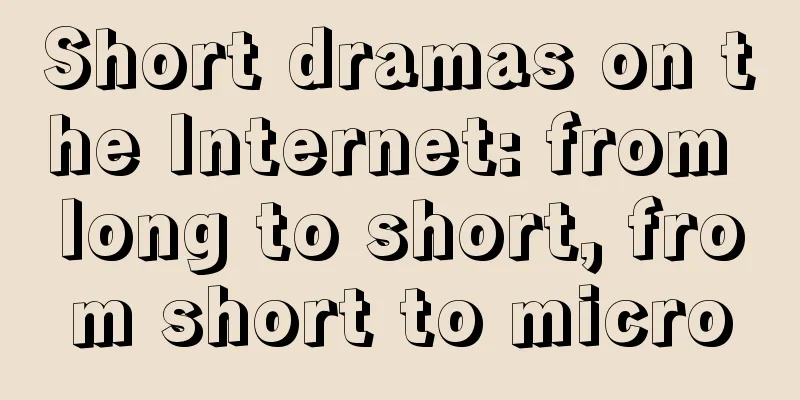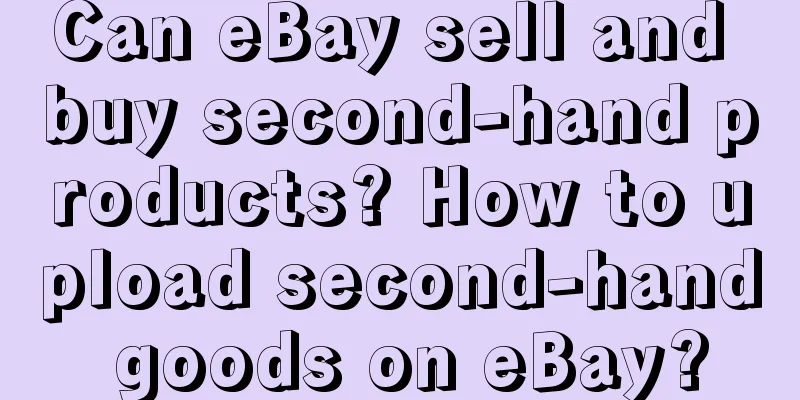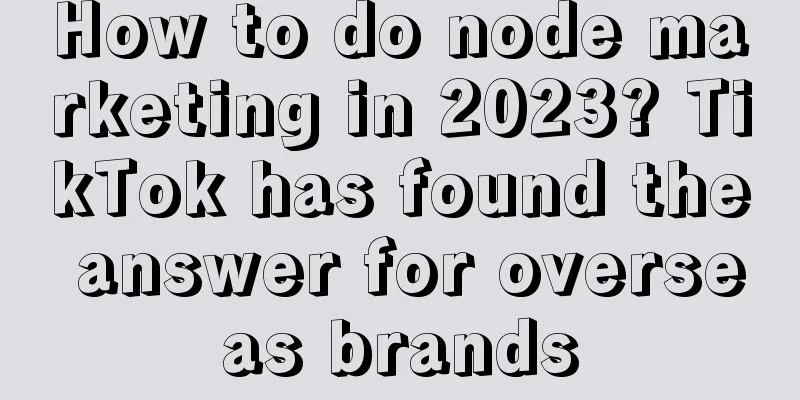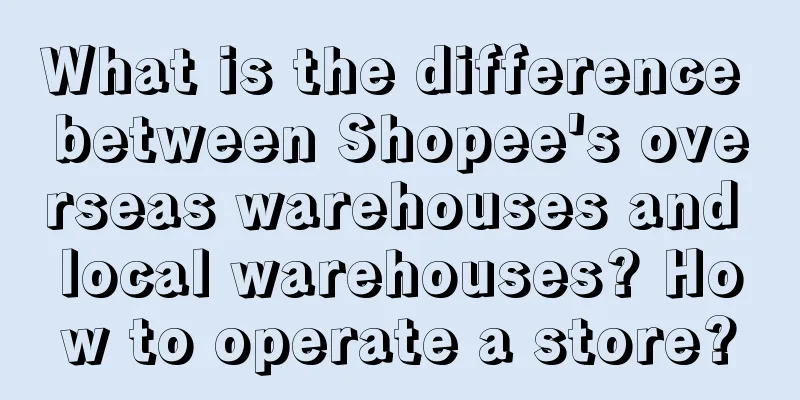Can e-commerce conversion rates be viewed in this way?
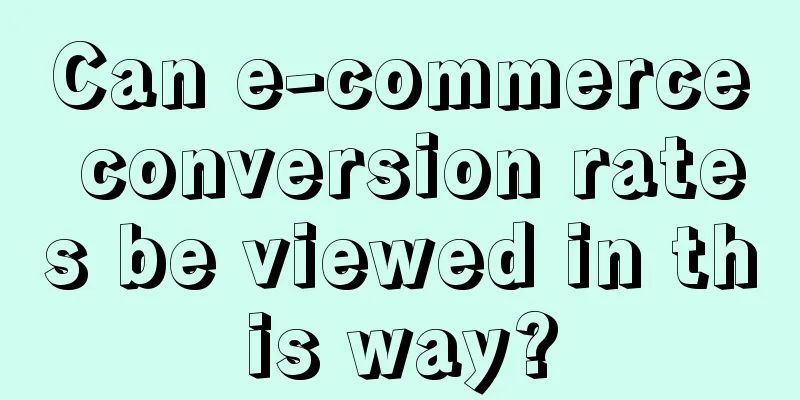
There is a principle behind any appearance. According to the common sense of e-commerce, only products with high conversion rates can enjoy the bonus of traffic surge, but the reality is that the data of products with poor conversion rates are better than those with high conversion rates. Why is this? Later, I pushed a lot of similar links and gradually found the answer from the commonality. It turns out that the product conversion rate data we usually see is meaningless if we only judge the quality of the link from a single dimension of conversion rate value. It is valuable only when combined with the traffic pool. Because the conversion rate is not only affected by the quality of the link, but also by the accuracy of the crowd. 1. Products with high conversion rates are not necessarily goodAs mentioned above, the conversion rate should be considered in combination with the traffic pool. For example, I sell high-end facial masks with a customer unit price of 1,500 yuan per order. The platform has 20 million daily active users, and there are only 2,000 users who can consume this high-end facial mask. The system also accurately pushes it to this wave of users, and the conversion rate reaches an astonishing 30%, which is 600 orders. Don't worry, 600 orders is the ceiling of our link. Even if the system increases the order volume, it will not exceed 600 orders. Why? Because there are no buyers who can buy our home products. A good cook cannot cook without rice. The platform is powerless to promote you. Therefore, we can see that products with extremely high conversion rates cannot be exposed. It is not because of the algorithm, but because there are not many people. For the 9.9 yuan facial mask, the conversion rate may be only 1%, but the base is huge. With 10 million accurate users, there are at least 100,000 boxes of products. What is the purpose of doing e-commerce? Isn't it just for turnover? It's not click-through rate or conversion rate. Even if you make a main picture with the top click-through rate in the industry, what's the use if the product is niche? When selecting products, you should also evaluate the market capacity of this product and this pricing. For some products, I will go for a low price, and even if the conversion rate is not high, I am not worried, because I know that the user traffic of such a platform is large enough. Even if I am not good at conversion, but I have a lot of target users, I can still expand it. For example, a product with a click-through rate of 1% and a conversion rate of 2% can sell for more than 10,000 yuan a day. 2. Products with low conversion rates are not necessarily badIf I had seen this sentence before I started doing e-commerce, I would never have believed it, until I ran a few such products and was convinced. I have at least 3 such links, and the conversion data is extremely poor. I wonder what to do with such links. As a result, organic orders were placed. The link with a conversion rate of less than 1% was ranked first in the store visitor rankings every day. Isn't that amazing? There were also direct trains that increased the number of orders by themselves, but the clicks and conversions were far below the passing line (5% and 5%). Why did this happen? My understanding is that the increase in single volume is the result, and the essence is the increase in the crowd. The basis for increasing the crowd is data feedback, which is nothing more than conversion, click and penetration rate. What does it mean? I have a link with a customer order of 50 yuan, a conversion rate of about 15%, and the exposure has been increasing. Suddenly one day, the exposure increased several times, but the conversion rate plummeted. I should be happy about the increase in exposure, but at that time I felt that something was wrong. Sure enough, the exposure the next day was exposed. Since then, the platform has never increased the exposure, and there have been only a dozen orders every day. Why don't they increase exposure? To use a common saying, we can't handle this overwhelming wealth, so the platform will naturally not waste traffic on us. Even though some products don't convert well, their junk traffic can achieve 1% conversion. If junk traffic is given to us, it can't even reach one thousandth, so they will definitely not increase our exposure. 3. Good conversion rates are not staticThere was a misunderstanding before that the conversion rate should be fixed at 5-10% to be considered good. But we must understand that users are stratified, and the conversion rates of accurate users and non-accurate users are different. You should have felt this in previous search and scene promotion. Search is people looking for goods, the purchase purpose is strong, and the conversion rate is naturally high. Scene is goods looking for people, and if you think you may need this thing, you will be exposed. If you originally have no purchase plan, will you buy it? This is hard to say. The platform search traffic is expected to be 30%, and the scene traffic is above 60%. If you only capture the search traffic, your product ceiling is there. Although the conversion rate is high, the number of orders is also so. For products with natural orders, the system will actively push them to potential buyers. For example, if you sell 10 kilograms of oranges, it only costs 9.9 yuan. Even if the buyer doesn't want to buy oranges at the moment, he may place an order when he sees that your oranges are so cheap. Because the price is attractive enough, the conversion rate is naturally not high if you tap into this kind of potential buyers. So even if the conversion rate is 2%, it is considered high in the scenario. If the conversion rate of the scenario can reach 10%, it would be strange if the link does not take off. Based on this, we can see that whether your link conversion rate is high or low depends on whether the traffic the platform provides you is accurate. If the traffic is accurate, the conversion rate is high; if the traffic is poor, the conversion rate is low. The system also knows the quality of its own traffic, so when it injects junk traffic into you, the conversion rate assessment standard will be lowered a lot. This is why products with a conversion rate of less than 1% will continue to receive traffic. If products that can monetize junk traffic, what reason is there for the platform not to promote them? I have worked on traffic operations for platforms before, and I do the same thing when I distribute traffic. The price of precise traffic is different from that of general traffic, but will I tell others about this? Of course not. We charge by exposure, not by quality. If the high-quality products are charged at a low price, wouldn’t we be losing a lot? So we will sell both good and bad traffic together, and the data you see in the end is a compromise. For example, the conversion rate of full-site promotion is higher than that of scene promotion and lower than that of search. This is how it comes about. 4. Final Later on, I basically stopped looking at the conversion rate of links, as I felt it was meaningless. I just looked at it when a new link was first launched, just to make sure it wasn’t too low. Now I only look at how many orders I can get per hour with my bid. If I bid 10 yuan, I can get 8 orders per hour. If I bid 12 yuan, I can get 10 orders per hour. In fact, it is just about spending money to buy orders. What I need to think about is how to spend less money and get more orders. This has nothing to do with conversion, but is related to pit production and ranking, which is another topic. Author: Tiger Talks Operations WeChat public account: Tiger Talks about Operations (ID: laohujiangyy) |
<<: Do brands really understand young people?
Recommend
5 safe and reliable ways to attract traffic from Xiaohongshu
As a content-driven social platform, Xiaohongshu p...
What is the appropriate review rate for Amazon stores? What is the control rate for new products?
The review rate of Amazon stores is a very importa...
A fishing expert taught me how to operate Pinduoduo
Anyone who has fished knows that fishing requires ...
What does an Amazon packing slip mean? What are the requirements?
Amazon's cross-border e-commerce platform is d...
"Outdated" male stars "harvest" aunts on video accounts
Middle-aged male celebrities have found a new stag...
How to pay with Apple Pay on eBay? What products are compatible with Apple Pay?
Apple Pay is one of the payment methods commonly u...
Why I think Lei Jun will launch a 99,000 yuan "Redmi car"
In the past two days, Lei Jun launched the Xiaomi ...
You can easily earn 20,000+ yuan a month through the official account. This is a really great way to monetize.
The author of this article breaks down the three m...
How to ship goods when doing cross-border e-commerce at home? How to send express delivery?
When doing cross-border e-commerce, after receivin...
Sold 100 million in 4 hours, what’s Dong Yuhui’s next move?
As a new anchor, Dong Yuhui showed his ability to ...
Abandoning Arc'teryx, cycling clothing becomes the new favorite of the middle class?
The cycling pandemic in 2024 has led to the explos...
I conducted a small-scale survey of former employees of large Internet companies.
Through the author's own workplace communicati...
What should I do if Amazon delivers goods during the Spring Festival? How should I handle it?
Now that the Chinese New Year is coming soon on Am...
Don’t underestimate the value of Apple Live
At 7pm on May 31, Apple's Tmall flagship store...
How long does it take to apply for Amazon's Transparency Program? What is the application tutorial?
Nowadays, more and more merchants are opening stor...
